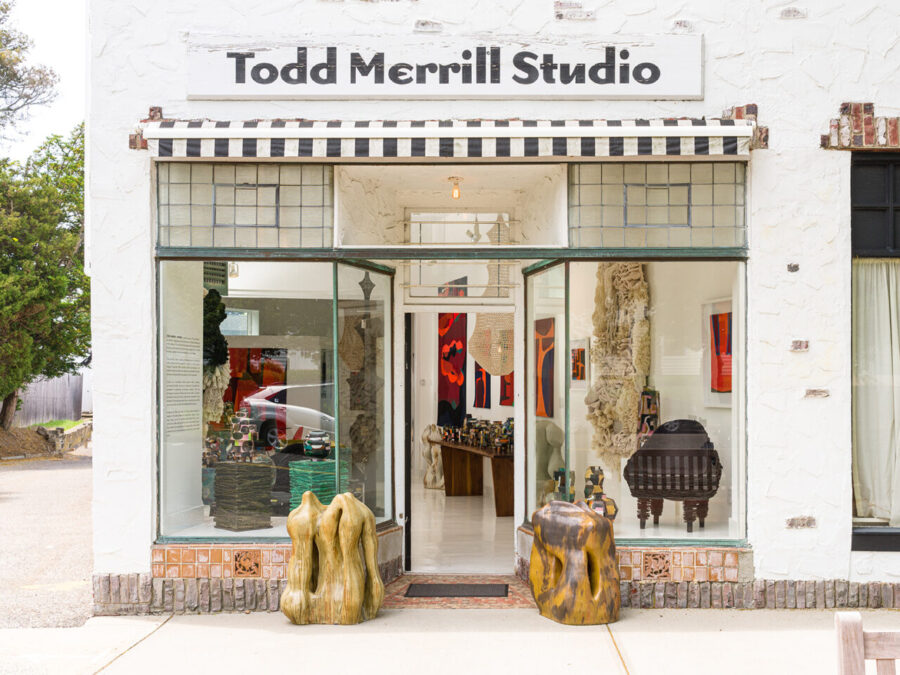
Fire and Fiber, the new exhibit at Southampton’s Todd Merrill Studio, showcases innovative artistic explorations of environmentally-conscious practices, now and in the future, to foster positive change. The gallery, located at 11 South Main St, Southampton, will be open Saturdays and Sundays from 10:00 am–5:00 pm or by appointment.
Now open for its 9th year in Southampton and New York City, Todd Merrill Studio highlights established and emerging artists contributing to today’s increasingly relevant grey space between art and design. The current exhibit, Fire and Fiber, illustrates the groundbreaking studio’s vision and commitment to an atmosphere of creativity in medium and method.
Exhibited artists skillfully utilize fiber, textiles, and ceramics, embracing environmentally friendly techniques while pushing the boundaries of artistic expression. Featured artists include Gerri Spilka, Erik Speer, Vadim Kibardin, Annie Legault, Connor Moxam, Joseph Cleghorn, Christopher Russel, Curtis Fontaine, and Maarten Vrolijk.
Creativity, like clay, is a renewable resource. Ceramics, as a medium, are a vital testament to the exhibition’s expressed commitment to sustainable practices and creativity. Earthy, inert, and naturally non-toxic, ceramics are composed of clay and water. In a world of scarcity and finite resources, clay offers an abundance.
Fibers and textile art utilize robust natural materials like cotton, paper, hemp, jute, and silk, with evidence of excellent sustainability potential. Textiles, obviously a much newer technology in human evolution, are arguably as important to the aggregate output of human expression. These renewable and biodegradable materials make them excellent choices for artists seeking to minimize their environmental impact.
In the face of global climate change, the production and practice of these mediums take on new importance. Ceramics have been a hallmark of human expression—art as form and function—since the Neolithic age. The invention of paper, and eventually the printing press, have radically reshaped how humans see and relate to the world.
This exhibit has vitality, something essentially human, showing artists grappling with the need to create and the need to conserve. The triangular dialogue between artist, art, and audience—itself a commentary on the public and private (do they exist?)—is extrapolated onto a global scale.
That climate change should impact how artists create and how the audience receives that work is obvious—after all, art imitates life. I found inspiration, particularly in the empowerment of the exhibit models. While art is by definition, scarce, creativity is available in abundance, inevitably renewable.
I love writing about art because it’s so subjective. Questions, feelings, and ideas are our own, and who is to say what is “right”? I am skeptical of exhibits so curated and crafted that there is little to interpret, little to feel.
Fire & Fiber left me considering no one idea, no singular statement, but rather a mosaic made from myriad messages.
– Art as an organism, a living object born from an amalgam of imagination and material
– The intrinsic irony existing between art as an object and art as material
– Nature as canvas, life as paint
– Is preservationism inherently anti-expression?






